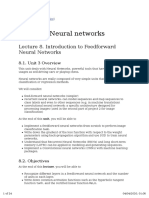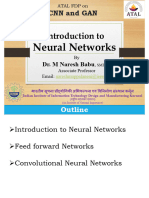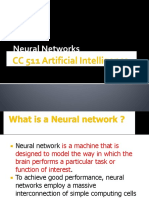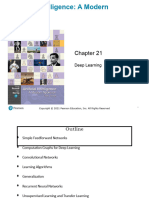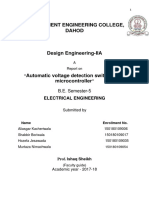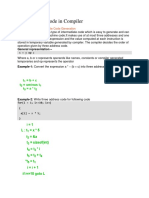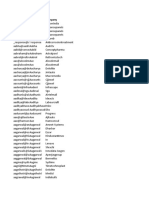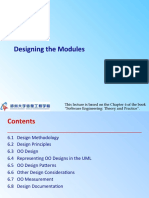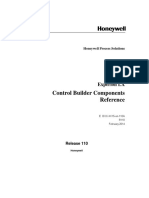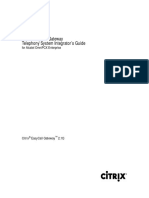0% found this document useful (0 votes)
78 views45 pagesAn Introduction To Neural Networks: Instituto Tecgraf PUC-Rio Nome: Fernanda Duarte Orientador: Marcelo Gattass
This document provides an introduction to neural networks. It begins by defining machine learning and discussing common machine learning applications such as digit recognition, face recognition, and recommendation engines. It then describes different types of neural networks including feedforward neural networks, convolutional neural networks, and discusses concepts like neurons, layers, activation functions, and backpropagation for training networks. The document provides examples to help explain these concepts in a clear and concise manner.
Uploaded by
GiGa GFCopyright
© © All Rights Reserved
We take content rights seriously. If you suspect this is your content, claim it here.
Available Formats
Download as PDF, TXT or read online on Scribd
0% found this document useful (0 votes)
78 views45 pagesAn Introduction To Neural Networks: Instituto Tecgraf PUC-Rio Nome: Fernanda Duarte Orientador: Marcelo Gattass
This document provides an introduction to neural networks. It begins by defining machine learning and discussing common machine learning applications such as digit recognition, face recognition, and recommendation engines. It then describes different types of neural networks including feedforward neural networks, convolutional neural networks, and discusses concepts like neurons, layers, activation functions, and backpropagation for training networks. The document provides examples to help explain these concepts in a clear and concise manner.
Uploaded by
GiGa GFCopyright
© © All Rights Reserved
We take content rights seriously. If you suspect this is your content, claim it here.
Available Formats
Download as PDF, TXT or read online on Scribd
/ 45
















